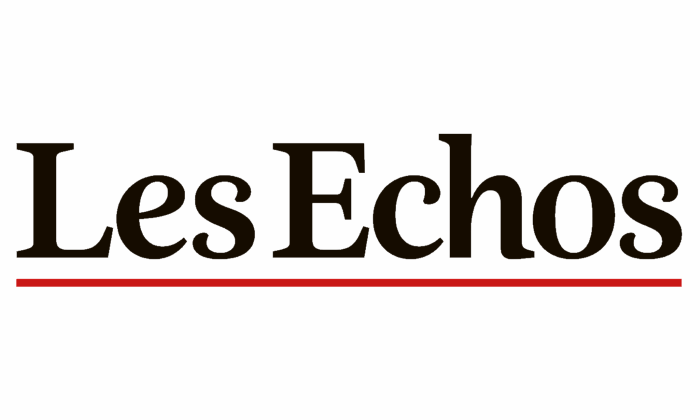The facts are clear. Some economists have claimed in recent years that debt did not matter because they thought that interest rates would remain very low in relation to the growth rate (negative i-g) for a long time. On the one hand, this analysis was based on a bold anticipation of future inflation, and on the other, it did not take into account budgetary constraints, which, even if low when interest rates are below the growth rate, still exist(1). Thus, this assertion led to a recommendation to spend more, undoubtedly to deal with the major challenges we are facing, but without worrying about constantly expanding debt. It was as if central banks had entered an unlimited policy of quantitative easing, both in terms of duration and amount. I explained previously why (2), even assuming that inflation did not return, which was by no means sure, such a situation may not be sustainable, given the financial vulnerabilities it added to. And given the possibility of a major recession. And, finally, as the monetary system is a debt settlement system, given that confidence in money could disappear because debts can never be constantly growing faster than the real economy.
Inflation has now returned(3 & 4) and is no longer merely transitory. Let us analyse the consequences of its return in force for all players.
Central banks: they must combat inflation. This is essential, because an inflationary regime must be avoided, that is, a system in which indexation is triggered between prices and prices, prices and wages, wages and prices. Thus, the inflation rate is neither low nor stable. Such inflation creates inequalities between households, which obviously do not have the same capacity to react to protect their purchasing power. It also leads to inequality between companies that do not all have the same capacity to “set prices”. In addition, as history has shown, once the stability and predictability of the inflation rate is disturbed, confidence wanes among economic players, producers and consumers. Prices can no longer be set easily, and need to be reset several times a year, or even more in the case of hyperinflation. This undermines confidence. Between employees and companies where employee representatives may have to request a second round of negotiations within a year, or more. This undermines the reliability of negotiations between the company’s employees and management, causing tension. Between lenders and borrowers, with lenders no longer knowing how to set lending rates, as interest rates are constantly rising. This widespread uncertainty creates tension and undermines confidence, which is one of the cornerstones of economic efficiency, growth and life in society. This is why rather low and stable inflation, ideally around 2% or 3%, is highly desirable, and why central banks have no choice but to implement a monetary policy that can at best ensure inflation is maintained at this level, and, if necessary, brought back to it.
However indispensable it is, this mission of central banks is difficult under the current circumstances. If interest rates rise too sharply or too much, this can easily trigger a recession, a hard landing. It may indeed be over-calibrated, if it is assumed that the transitory component of current inflation will weaken in the near future. Supply constraints can and should indeed ease over time, excluding the consequences of the unfolding war in Ukraine, which could exacerbate shortages of energy and certain agricultural products.
However, raising interest rates too slowly would not do enough to combat the return of high inflation by allowing indexation to develop. And reacting late, once inflation expectations are no longer anchored at a low level and indexations are put in place, is much more costly in terms of growth, since deep recessions are difficult to avoid.
But there’s more. The mission of central banks is all the more difficult because we have experienced interest rates that were too low for too long. Of course, long-term and short-term rates had to be driven towards zero in order to enable us to emerge from the major crisis of 2007-2009 and the risk of deflation that it entailed. It was also necessary during the pandemic. However, as soon as growth returned (in 2016-2017), maintaining such low interest rates, on the pretext that the natural interest rate was very low, was dangerous. Moreover, the natural interest rate is a concept and not an observable variable. It is neither theoretically indisputable(5) nor easy to use. Similarly, it is possible that the very low inflation rate of the period – which quantitative easing policies did not manage to raise – was due to structural forces (globalisation and the technological revolution), with a Phillips curve made flat as a result, and not to a lack of demand, and therefore to a cyclical phenomenon. Keeping rates too low for too long has led to consequences that the Bank for International Settlements has described very well for years. When the interest rate is too low in relation to the growth rate for too long and there is a growth phase, bubbles develop. Equity bubbles, real estate bubbles and over- indebtedness of governments and private agents. Today, if rates must be raised and quantitative easing policies gradually come to an end in the face of a major risk of a change in the inflation regime. As assets (equities and real estate) are highly valued and the level of global debt is very high, central banks must face the risk of sudden bursting of these bubbles and solvency crises of economic actors with too much debt. With the attendant risks to growth(6).This situation of macro-financial vulnerability is therefore necessarily problematic for central banks, and they must therefore be very determined and very cautious. This is why they have begun to normalise their policy and will go without debate until they reach what they consider to be their neutralisation (i.e. a monetary policy that is neither restrictive nor growth-promoting) towards the end of 2022 or the beginning of 2023. But once this stage is reached, they will act according to the circumstances. If growth slows down sharply, if the markets fall dramatically, they will take action. The state of wage and price indexation, and therefore of the level of underlying inflation, will then be scrutinised to determine whether it is appropriate or dangerous to position interest rates above the rates already reached. If the inflation trajectory does not take a satisfactory downward path, we can bet that the central banks will continue to tighten their monetary policy in order to make it more aggressive, both by a stronger rise in key rates (i.e. short rates) and by sustained quantitative tightening in the United States and by its initiation in the euro zone, thus contributing to a stronger and more rapid rise in long interest rates.
Central banks must remain credible in the face of inflation. They must be clear in their statements, showing an unwavering determination to fight it. Conversely, they must be gradual and prudent in their actions, without however being dominated by governments or financial markets.
Governments, for their part, have no choice but to have a credible medium-term solvency trajectory(7). An excessively strict fiscal policy would destroy growth, but doing nothing when the level of indebtedness is high would considerably undermine their credibility, causing a high risk on the public debt markets in the short term. They therefore need to put in place a policy of managing public finances without austerity, but which in reality provides an exit from any kind of support policy, with a focus on the weakest populations, must therefore be put in place. The pandemic, by its very nature unexpected, brutal and temporary, should clearly be differentiated from a possible change in inflation regime.
In addition, the investments needed to increase potential growth or green growth must be financed. However, this financing must be secured by more rational and efficient management of public spending, particularly current expenditure, as well as by structural reforms(8). These are absolutely necessary for increasing potential growth, for public finances and for increasing supply, which is itself a factor in the fight against inflation. Certain supply-side policies may have positive effects quickly, others more in the medium term, both on inflation and on growth. This includes policies that increase the employment rate, such as pension reform, as well as unemployment benefit reform. The shortage of jobs in recent months is in fact preventing the supply of goods and services from being higher, as well as supporting the phenomenon of (partial) wage indexation.
Companies with too much debt, for example according to the ratios proposed by the ECB itself, must
pursue a reasonable but real deleveraging policy in order to better get through this coming period of rising interest rates and fewer financing facilities.
For households, the question of purchasing power arises(9). It will be difficult to preserve it completely. For companies, it will not be possible to index systematically wages to inflation. Moreover, since 1983, the Delors and Bérégovoy Act has prohibited companies from indexing wages to prices. If they did so, they would precipitate rising inflation and also destroy their competitiveness or profitability, both of which would severely reduce their ability to invest and employ in the future. Companies cannot therefore do everything. And they can only act according to their specific situation. It is also impossible for governments to protect everyone against inflation over the long term, as for many of them, their fiscal room for manoeuvre has already been tested. It should also be noted that such a policy is contrary to that pursued by central banks. This non-cooperation between economic policies could prove dangerous in terms of financial stability. The generalised support of purchasing power, together with insufficient supply, is also precipitating the deterioration of the foreign trade deficit, which has already been affected by the rise in the cost of imported energy. The rise of interest rates will further accentuate the budgetary constraints of the States, for those of them that are more indebted. There is still a possibility of protecting households’ purchasing power as effectively as possible: we are in a special situation in which inflation needs to be reduced, purchasing power protected and a proven labour shortage needs to be addressed. Most companies are short of employees. Increasing wages a little in exchange for a moderate increase in working hours could be part of the solution, as long as it is the choice of companies and employees themselves.
This would be good for growth, good for public finances and good for foreign trade.
CEO of BRED and Professor of Financial Macroeconomics and of Monetary Policy at HEC Paris
Bibliography :
- r minus g negative: Can we sleep more soundly?
Paolo Mauro, Jing Zhou
IMF working papers – March 13, 2020
- How can we avoid the debt trap after the pandemic?
Olivier Klein
Revue d’Economie Financière – 20 mai 2021
- The return of inflation?
Olivier Klein
Les Echos – 6 juillet 2021
- The return of inflation
Speech by Agustin Carstens
BIS – 5 April 2022
- What anchors for the natural rate of interest?
Claudio Borio, Piti Disyatat and Phurichai Rungcharoenkitkul
BIS Working papers – N° 777 – 26 March 2019
- Inflation, interest rates and debts: an explosive cocktail
Olivier Klein
Les Echos – 16 mai 2022
- The new debt equation in the next five years period
Olivier Klein
TELOS – 21 avril 2022
- A story of tailwinds and headwinds: aggregate supply and macroeconomic stabilization
Speech by Agustin Carstens
BIS – 26 August 2022
- Inflation and purchasing power: breaking out of an impossible equation
Olivier Klein
Les Echos – 15 juin 2022



